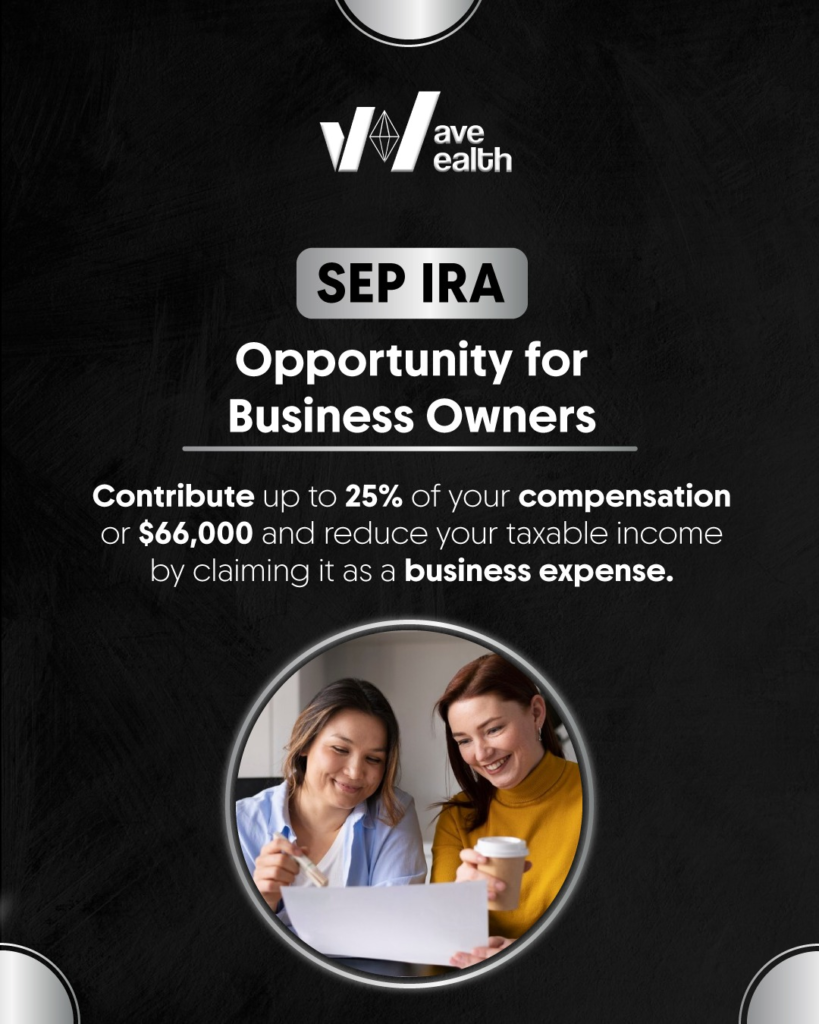As the calendar turns to 2025, it’s easy to think your opportunities to impact your 2024 tax liability have come and gone. However, certain tax-advantaged investment strategies remain available to help you lower your 2024 tax burden, even after the year has ended. For individuals and business owners alike, options such as SEP IRAs and Traditional IRAs can be game-changers. Here’s how they work and what you need to know.

1. SEP IRA: A Powerful Option for Business Owners
A Simplified Employee Pension (SEP) IRA allows business owners and self-employed individuals to contribute a significant portion of their income to a retirement account while reducing taxable income.
Key Details:
- Contribution Limit: The lesser of 25% of compensation or $66,000 for 2024.
- Eligibility: Business owners and self-employed individuals, including sole proprietors, partnerships, and corporations.
- Important Deadline: Contributions can be made up until your business’s tax filing deadline, including extensions. For example, if you file for an extension, you may have until October 15, 2025, to contribute for the 2024 tax year.
Tax Benefit: Contributions are tax-deductible, reducing your taxable income for 2024 while growing tax-deferred.

2. Traditional IRA: An Option for Individuals
For individuals looking to maximize tax-deferred growth and potentially lower their 2024 taxes, a Traditional IRA is a great choice. Even if you didn’t contribute during 2024, you still have time to do so in 2025.
Key Details:
- Contribution Limit: Up to $6,500 for 2024 ($7,500 if you’re age 50 or older).
- Eligibility: Contributions are fully deductible if you (and your spouse, if married) aren’t covered by a retirement plan at work. If you are covered, deductibility depends on your income:
- Single Filers: Deduction phases out between $73,000 and $83,000.
- Married Filing Jointly: Deduction phases out between $116,000 and $136,000 (if covered by a workplace plan) or $218,000 to $228,000 (if only your spouse is covered).
- Important Deadline: Contributions must be made by April 15, 2025.
Tax Benefit: Contributions may reduce your 2024 taxable income, depending on your eligibility, and earnings grow tax-deferred.
3. Roth IRA Contributions for Tax Diversification
While Roth IRA contributions don’t provide an immediate tax deduction, they offer tax-free growth and withdrawals in retirement. If you’re considering a Roth IRA for tax diversification, you can also contribute for 2024 until April 15, 2025.
Income Limits for 2024:
- Single Filers: Contributions phase out between $138,000 and $153,000.
- Married Filing Jointly: Contributions phase out between $218,000 and $228,000.
4. Maximize HSA Contributions
If you have a high-deductible health plan (HDHP), consider contributing to a Health Savings Account (HSA). While not an investment account in the traditional sense, it provides triple tax benefits: tax-deductible contributions, tax-free growth, and tax-free withdrawals for qualified medical expenses.
Key Details for 2024:
- Contribution Limits: $3,850 for individuals and $7,750 for families, with an additional $1,000 catch-up contribution if you’re age 55 or older.
- Deadline: Contributions for 2024 can be made until April 15, 2025.
Tax Benefit: Contributions reduce your 2024 taxable income.

Final Thoughts
These investment strategies provide opportunities to lower your 2024 tax liability well into 2025. Whether you’re a business owner leveraging a SEP IRA or an individual maximizing Traditional IRA contributions, taking advantage of these options can lead to significant tax savings and long-term financial growth.
To make the most of these opportunities, consult with a financial advisor or tax professional who can guide you based on your specific financial situation and ensure compliance with IRS regulations. Don’t leave money on the table—start planning now to optimize your tax strategy!
Ready to take action? Schedule a call with us today and let’s craft the perfect plan to reduce your taxes and grow your wealth!
